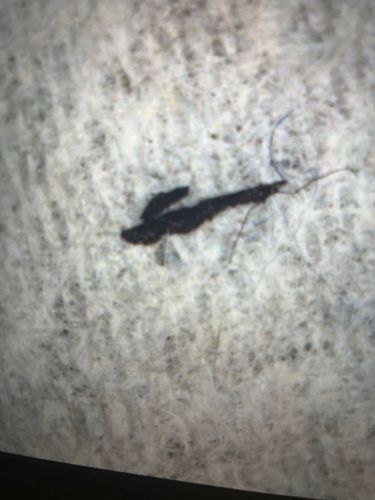Fungus Gnat (Larva)
Scientific Name: Bradysia spp. (for dark-winged fungus gnats, common in homes) or various genera within Mycetophilidae.
Order & Family: Order: Diptera, Family: Sciaridae (dark-winged fungus gnats) or Mycetophilidae (true fungus gnats)
Size: Larvae are typically 4-7 mm long, slender, whitish, with a distinctive black head capsule.

Natural Habitat
Damp soil, potting mix of houseplants, greenhouses, compost piles, and other environments rich in moisture and decaying organic material or fungi.
Diet & Feeding
Mainly fungal hyphae and decaying organic matter in soil. They can also feed on plant roots, especially in conditions of overwatering.
Behavior Patterns
Larvae develop in moist, dark environments, often near sources of decaying organic matter and fungi. They are typically slow-moving and not directly harmful to humans. Adult fungus gnats are attracted to light but generally remain near their breeding sites.
Risks & Benefits
Risks: Can be a nuisance in homes, especially for houseplants, where their larvae can damage roots and stunt plant growth. They do not bite humans or transmit diseases. Benefits: In natural environments, they contribute to the decomposition of organic matter.
Identified on: 9/4/2025